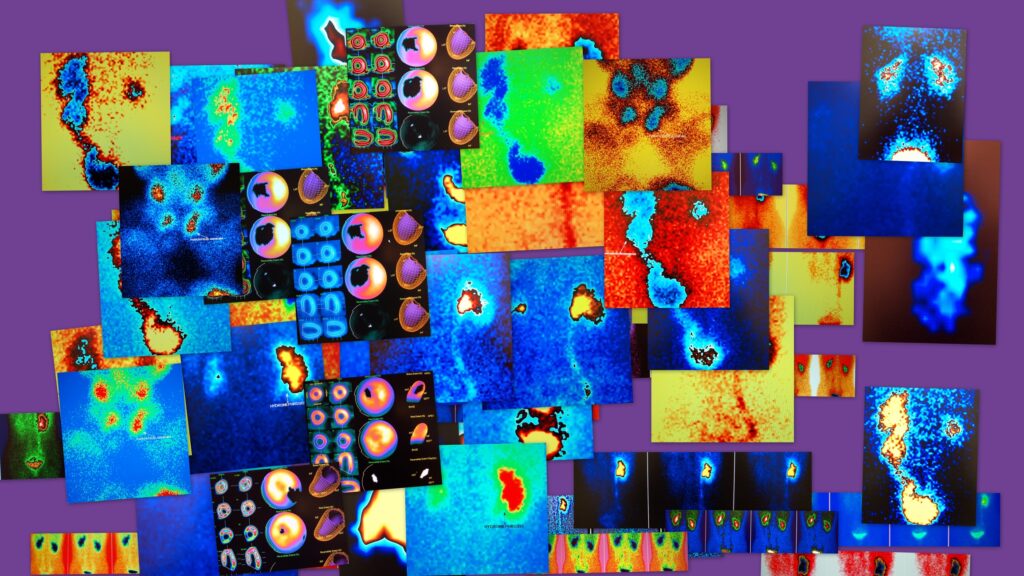Mental health professionals are drowning in paperwork. Recent research by Nuance shows healthcare workers spend 13.5 hours each week just on clinical documentation. That’s more than a full day’s work spent writing notes instead of helping patients.
For mental health professionals, the situation is even worse. They spend over 20% of their working time on administrative tasks, with therapy notes eating up the biggest chunk. The result? 53% of psychologists can’t take new patients because they’re already overwhelmed.
The good news is that artificial intelligence in healthcare is starting to change this reality. AI tools are helping therapists reclaim their time while maintaining the quality care their patients deserve.
The reality check: Five AI platforms are leading this transformation: Supanote, Mentalyc, Limbic, Wysa for Healthcare, and Clinical Notes AI. These tools offer genuine solutions for reducing documentation time while keeping clinical standards high and maintaining HIPAA compliance.
Why AI Documentation Matters Now More Than Ever
The numbers tell a sobering story. According to medical artificial intelligence research, AI tools in clinical documentation show accuracy rates between 85% and 95% when properly trained on mental health datasets. But here’s what really matters: the APA’s 2024 Practitioner Pulse Survey found that only 11% of psychologists use AI monthly for administrative tasks, while 71% have never tried it.
This gap represents a massive opportunity. Early adopters report significant improvements in workflow efficiency and patient capacity, yet most practitioners remain skeptical or unaware of these tools’ potential.
The clinical evidence is compelling. Studies show that AI-powered documentation can reduce note-taking time by up to 80% without sacrificing clinical quality. More importantly, it allows therapists to focus on what they do best: providing therapeutic care.
Tool #1: Supanote—Built for Therapists by Therapists
Supanote stands apart from generic medical documentation tools. Launched in 2024, it was designed exclusively for mental health professionals who understand the nuances of therapeutic documentation.
What makes Supanote different? It’s trained on thousands of real, insurance-approved therapy notes. This isn’t just speech-to-text software. The platform understands therapeutic language, recognizes different treatment modalities like CBT and DBT, and adapts to each clinician’s documentation style.
The “Super Fill” feature deserves special mention. Instead of copying and pasting notes between systems, therapists can transfer documentation directly into their EHR with one click. It works with SimplePractice, Valant, and TherapyNotes right now, with more integrations coming.
Security is paramount. Supanote transcribes sessions in real-time, which means no audio recordings are ever stored. For privacy-conscious practitioners, this is a game-changer.
Clinical validation studies show Supanote achieves 92% accuracy in note generation. More telling, 95% of users report meaningful time savings within their first month. The pricing is straightforward: $29.99 monthly for 40 notes, scaling up to unlimited notes for $89.99.
Tool #2: Mentalyc—The Learning Platform
Mentalyc takes a different approach. Developed by frustrated psychologists, it’s designed to grow with your practice. The platform learns your documentation style over time, making notes that sound authentically yours.
Group practices love Mentalyc’s multi-therapist support. The system manages different user permissions while maintaining consistent documentation standards across the team. Session summaries help with continuity of care, especially important when colleagues cover for each other.
The adaptive learning is impressive. The more you use it, the better it gets at capturing your specific therapeutic approach. Clinical trials show 87% improvement in documentation consistency across practices with multiple therapists.
There’s a catch, though. To access most features, you need the $70/month plan. The lower-tier options are quite restricted, which makes it expensive for solo practitioners.
Tool #3: Limbic—Medical-Grade AI
Limbic carries a distinction no other mental health AI platform has: Class IIa medical device certification in the UK. This certification requires rigorous clinical risk management and controlled software development processes.
The platform goes beyond documentation. Limbic’s AI can predict diagnostic categories with 94% accuracy and includes automated screening tools for identifying high-risk individuals. The integrated CBT modules deliver evidence-based interventions through conversational AI.
Healthcare organizations using Limbic report impressive results. Access for underserved populations increased by 179%, while therapist workflow efficiency improved by 32%. These aren’t just productivity gains—they represent more people getting the care they need.
Limbic focuses on enterprise implementations. If you’re running a large practice or healthcare system, their comprehensive EHR integration and clinical support make sense. Solo practitioners might find it overkill.
Tool #4: Wysa for Healthcare—Beyond Documentation
Wysa evolved from a consumer mental health app into an enterprise platform. What sets it apart is the population health analytics and multilingual support.
The crisis detection algorithms are particularly sophisticated. Using natural language processing, Wysa can identify individuals at risk for self-harm or suicidal ideation. For practices serving diverse communities, the multilingual capabilities are invaluable.
Research shows 42% of employees engage more openly with AI-powered mental health screening compared to traditional methods. This leads to earlier intervention and better outcomes.
Wysa works best as part of larger healthcare systems that need white-label solutions and comprehensive patient management integration.
Tool #5: Clinical Notes AI—Compliance-First Approach
Clinical Notes AI focuses on behavioral health workflows with an emphasis on regulatory compliance. The “Chart-Aware Intelligence” understands longitudinal client records, ensuring documentation consistency across multiple sessions.
The supervision integration tools are excellent for training environments. New therapists get automated case presentation summaries, while supervisors can track documentation quality across their supervisees.
Beta testing showed an 88% reduction in documentation errors and 67% improvement in clinical supervision efficiency. For organizations with complex compliance requirements, these numbers matter.
The platform is designed for large behavioral health organizations rather than individual practitioners.
Making the Right Choice for Your Practice
Choosing an AI documentation tool isn’t just about features. Consider these practical factors:
Start with your workflow: If you’re already using SimplePractice or Valant, Supanote’s native integration eliminates friction. If you need enterprise-level analytics, Limbic or Clinical Notes AI makes more sense.
Think about your patient population: Solo practitioners with straightforward therapy practices can benefit from Supanote or Mentalyc. Large organizations serving diverse populations might need Wysa’s multilingual capabilities or Limbic’s diagnostic prediction tools.
Consider the learning curve: All these platforms require some adjustment time. However, tools designed specifically for mental health (like Supanote and Mentalyc) typically feel more intuitive to therapists.
Factor in costs beyond subscription fees: Training time, workflow changes, and potential EHR integration costs can add up. Sometimes the cheaper option isn’t actually less expensive.
Security and Compliance Essentials
All featured platforms maintain HIPAA compliance, but implementation details vary. Here’s what to verify:
Data residency matters for international practices. Some platforms store data in specific regions, which may conflict with local regulations.
Audit capabilities differ significantly. Some platforms provide detailed logs of who accessed what information, while others offer basic compliance reporting.
Integration security varies. Native EHR connections are generally more secure than copy-paste workflows, but they require more setup.
Staff training requirements shouldn’t be underestimated. Budget time for your team to learn new systems properly.
The Future of AI in Mental Health Practice
The trajectory is clear: AI will become standard in therapeutic practice. Current developments point toward more sophisticated capabilities:
Predictive analytics will help identify therapeutic opportunities before problems escalate. Imagine systems that flag when a client might benefit from a medication consultation or additional support.
Multimodal integration is coming. Future platforms will combine voice, text, and even biometric data for comprehensive patient assessment.
Real-time clinical decision support will provide evidence-based treatment recommendations during sessions. This isn’t about replacing clinical judgment – it’s about augmenting it with the latest research.
Population health management will help practices understand therapeutic outcomes across their entire patient base, informing both individual treatment and broader public health initiatives.
Implementation Strategy That Actually Works
Don’t try to revolutionize your entire practice overnight. Start small:
Pick one pain point. Maybe it’s progress notes that pile up at week’s end, or intake assessments that take too long. Choose the biggest frustration and address it first.
Test with a subset of patients. Try the new system with your most straightforward cases before moving to complex situations.
Get your team involved early. If you have staff, include them in the decision-making process. They’ll be more invested in making it work.
Plan for the adjustment period. Even good AI tools require 2-4 weeks to feel natural. Don’t give up during the initial learning phase.
Bottom Line
The integration of AI into mental health practice management represents more than technological advancement. It’s about reclaiming the time and mental space needed for quality therapeutic relationships.
These five platforms demonstrate that AI can successfully reduce administrative burden without compromising clinical care. For practices struggling with documentation backlogs and patient wait lists, the evidence strongly supports the implementation of mental health-specific AI tools.
The question isn’t whether AI will transform therapeutic practice—it already is. The question is whether individual practitioners will embrace these tools to create more accessible, efficient, and sustainable care for their patients.
Start with platforms like Supanote that understand mental health workflows. The investment in learning new systems pays dividends in reduced stress, improved work-life balance, and the ability to help more people when they need it most.
This analysis synthesizes peer-reviewed research, clinical studies, and verified performance data from healthcare organizations. Individual results may vary based on practice type, patient population, and implementation approach.
Disclaimer
The information provided in this article is for general informational purposes only and does not constitute professional, clinical, legal, or financial advice. Open MedScience does not endorse or guarantee the accuracy, completeness, or suitability of any third-party tools, platforms, or services mentioned. Readers should conduct their own due diligence and seek independent professional advice before implementing any technology in their practice. Regulatory compliance requirements, including but not limited to HIPAA, GDPR, or local equivalents, may vary depending on jurisdiction, and it is the responsibility of each practitioner or organisation to ensure adherence. The performance claims, pricing, and features described are based on sources available at the time of publication and may be subject to change without notice. Open MedScience accepts no liability for any loss, damage, or adverse outcome resulting from reliance on the information in this article.




